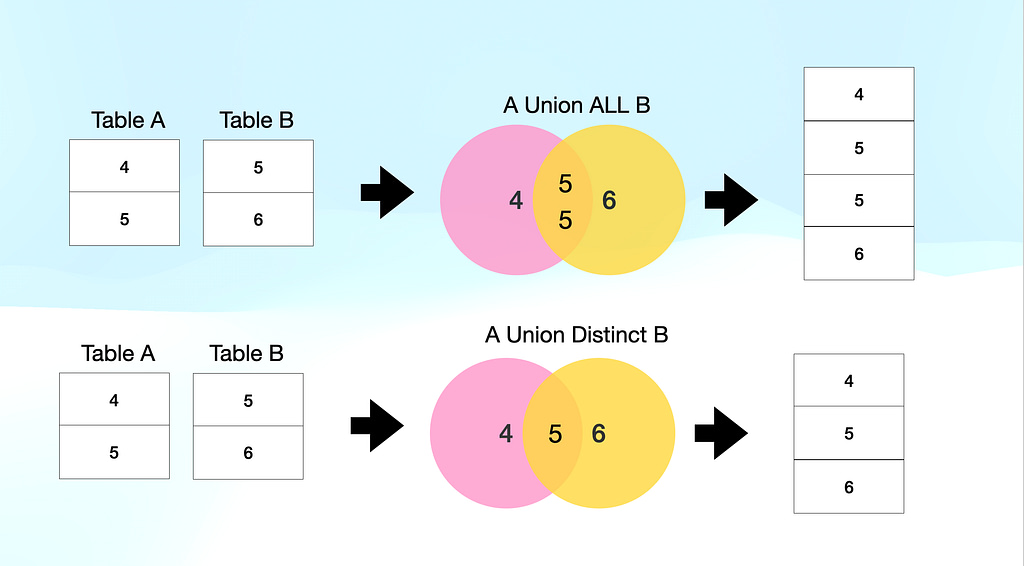The UNION operator combines the results of two or more input queries by pairing columns from the results of each query and vertically concatenating them.

-- This works
query1 UNION ALL query2 UNION ALL query3
-- This works
query1 UNION ALL (query2 UNION DISTINCT query3)For example, a simple query may look like this:
SELECT "apple" AS fruit, 1 as number, "football" as ball| Row | fruit | number | ball |
|---|---|---|---|
| 1 | apple | 1 | football |
When we use UNION to connect two queries together
SELECT "apple" AS fruit, 1 as number, "football" as ball
UNION ALL
SELECT "banana" AS fruit, 2 as number, "basketball" as ball;| Row | fruit | number | ball |
|---|---|---|---|
| 1 | apple | 1 | football |
| 2 | banana | 2 | basketball |
If a given row R appears exactly m times in the first input query and n times in the second input query (m >= 0, n >= 0):
- For
UNION ALL, R appears exactly m + n times in the result. - For
UNION DISTINCT, theDISTINCTis computed after theUNIONis computed, so R appears exactly one time.
SELECT 5 as col1
UNION DISITINCT
SELECT 5 as col1
/*----------+
| col1 |
+----------+
| 5 |
+----------*/SELECT 5 as col1
UNION ALL
SELECT 5 as col1
/*----------+
| col1 |
+----------+
| 5 |
+----------*
| 5 |
+----------*/SELECT 5 as col1
UNION DISITINCT
SELECT 6 as col1
/*----------+
| col1 |
+----------+
| 5 |
+----------*
| 6 |
+----------*/